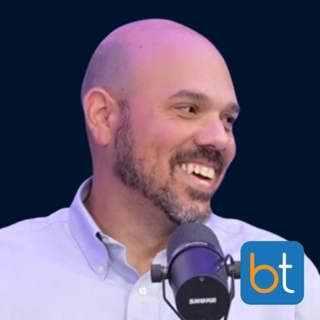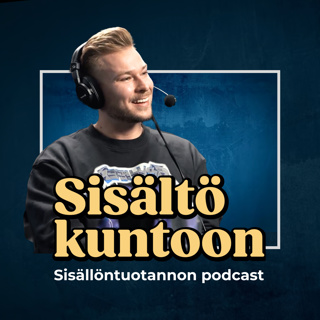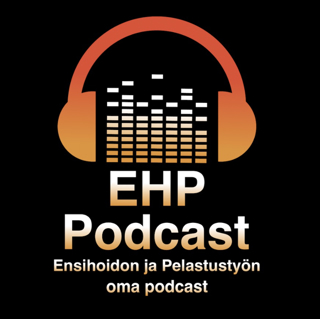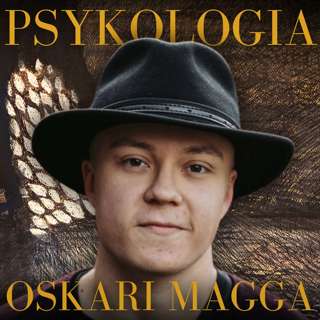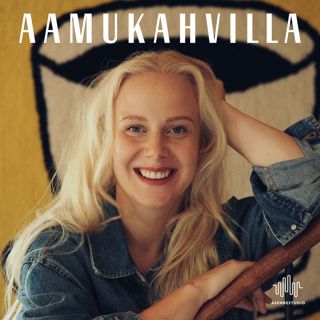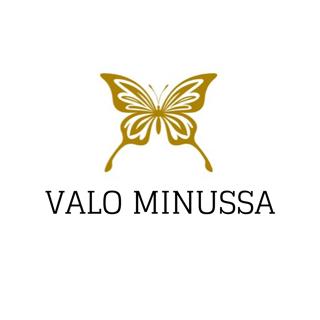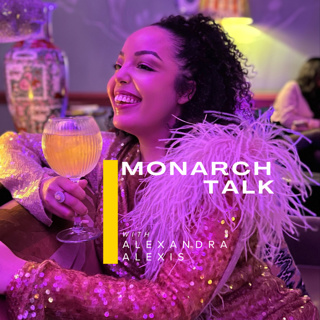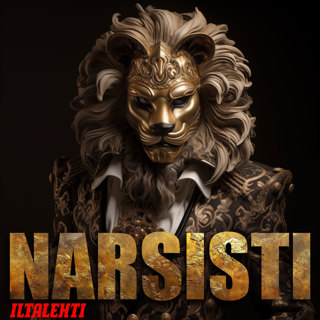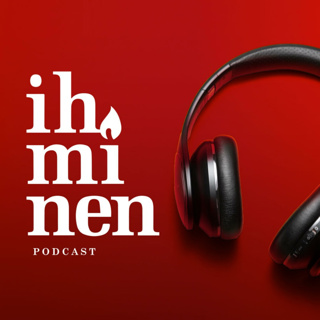
Ep. 115 Novel Right Heart Interventions with Dr. John Moriarty
Dr. Sabeen Dhand talks with Dr. John Moriarty about how he started removing "clot in transit" from the right heart, in addition to the PE and caval procedures, and how this service line has created a great collaboration with cardiology colleagues at UCLA Health. --- EARN CME Reflect on how this Podcast applies to your day-to-day and earn AMA PRA Category 1 CMEs: https://earnc.me/XRRcBv --- SHOW NOTES In this episode, Dr. John Moriarty joins Dr. Sabeen Dhand to discuss novel right heart interventions. Dr. Moriarty tells us how he started working on right heart interventions, and we describe what a clot in transit is and how often they occur. We explain how to decide when to do a right heart intervention for various types of clots, and we discuss the difference between the European and US right heart registries. We talk through some of the common devices used for right heart interventions, such as the angiovac. We compare cable work and right heart work, and we discuss how collaborating with cardiology and anesthesia can be helpful. Dr. Moriarty tells us how often he uses a transesophageal echocardiogram (TEE). We share some advice for those hoping to start performing right heart interventions and how to build confidence when starting this part of his practice. --- RESOURCES Edward Jones Financial Advisor Yaphet Tadesse: https://www.edwardjones.com/us-en/financial-advisor/yaphet-tadesse
15 Maalis 202127min

Ep. 114 Origin Story of the Palmaz Stent with Dr. Julio Palmaz
Dr. Julio Palmaz talks with Dr. Bryan Hartley about where he got the idea for the first commercially-available vascular stent, how he developed it working in his garage, and persevered despite repeated rejections to take it to market. Don't miss this one! --- EARN CME Reflect on how this Podcast applies to your day-to-day and earn AMA PRA Category 1 CMEs: https://earnc.me/biTSNQ --- SHOW NOTES In this episode, Dr. Julio Palmaz joins Dr. Bryan Hartley to discuss the origin story of his invention, the Palmaz Stent. Dr. Palmaz tells us about how he got into IR and the difference between practicing in Argentina and the United States. We discuss how Dr. Palmaz became interested in innovation and how he got started in academia. Dr. Palmaz talks about what inspired him to make the stent and what angioplasty looked like before he started working on the Palmaz Stent. We discuss how he began working on a prototype out of his garage, and we explain some of the challenges he faced in trying to get balloons to test out. We talk about welding and the cross points of the stent, and Dr. Palmaz tells us about the challenges of proposing his ideas to companies. We discuss working with mentors, getting grants and investors, and approaching Johnson & Johnson. Dr. Palmaz shares some of the biggest challenges he faced during his innovation of the Palmaz Stent. He explains his newest projects and what he sees for the future of medical devices.
8 Maalis 20211h 3min

Ep. 113 Below-Ankle Interventions with Dr. Kumar Madassery
Dr. Sabeen Dhand and Dr. Kumar Madassery discuss the importance of below-ankle interventions in limb salvage, including patient selection, technique, and a patient-centered longitudinal care plan. --- SHOW NOTES In this episode, Dr. Kumar Madassery joins Dr. Sabeen Dhand to discuss below ankle interventions. We discuss how to approach tissue loss in patients with severe and multi-level disease in order to minimize below ankle interventions and how to optimize imaging to get a comprehensive view. We explain the tips and tricks of performing a pedal loop, and we review the techniques for retrograde access. We review how to carefully manipulate wires during a pedal loop procedure. We discuss which devices can go through the pedal loop and what qualities are important in a wire for below ankle interventions. We discuss why having lysing can lead to a successful below ankle intervention and how to know when it is appropriate to do a pedal loop. We talk about the impact social media has had on IR and give some advice for those wanting to try pedal interventions. --- RESOURCES Dr. Madassery’s Twitter: @kmadass Use code BACKTABLE for discount at ISET: https://www.iset.org/
1 Maalis 202146min

Ep. 112 Shooting For Big Impact Projects with Dr. Aravind Arepally
In this special Innovation episode, Dr. Aravind Arepally tells us the stories behind what inspires him to shoot for big impact projects, how he built a startup device company with Jim Chomas, and the importance of working with people who give you energy and challenge you. --- SHOW NOTES In this episode, Dr. Aravind Arepally joins Dr. Bryan Hartley to discuss his development and innovation of medical devices. Dr. Arepally tells us how his childhood experiences influenced him to become a physician and how his mentors during fellowship inspired him to become an innovator. We discuss how a grant writing class opened up the world of research for Dr. Arepally and connected him with engineers. We talk about how important it is to have collaborative partners and why not to ignore any of the crazy ideas. Dr. Arepally shares his experience working in Germany for four months and how he started focusing on obesity and minimally invasive procedures. We discuss some of the challenges of trying to innovate while working in a private practice. We explain the origin story of Dr. Arepally’s company, SureFire and how he developed a business plan. We discuss fundraising, finding investors, and developing prototypes. Dr. Arepally tells us about his current projects, his future plans for innovation, and why he wants to focus on need based devices.
22 Helmi 202152min

Ep. 111 Underutilization of Foam Sclerotherapy with Dr. Chris Pittman
We talk with Dr. Chris Pittman, founder of Vein911 and LinkedIn Foam Sclerotherapy Experts, about Foam Sclerotherapy for the treatment of superficial venous disease, including technique, patient workup, and some of the reasons why foam is underutilized. --- EARN CME Reflect on how this Podcast applies to your day-to-day and earn AMA PRA Category 1 CMEs: https://earnc.me/sKSDrX --- SHOW NOTES In this episode, Dr. Chris Pittman joins Dr. Aaron Fritts to discuss the underutilization of foam sclerotherapy. Dr. Pittman tells us about how he started his vein treatment centers and about his upcoming reality TV show. We introduce the basics of foam sclerotherapy for varicose veins and how the procedure has been developed. Dr. Pittman shares some reasons why he thinks foam sclerotherapy is not as popular in the United States. We review when to use the three types of sclerosants, hypertonic saline, sotradecol, and polidocanol as well as the difference between compounded and non-compounded sclerosants. Dr. Pittman tells us the best way to get foam sclerotherapy training. We discuss the four components for evaluating a patient who may have venous disease, and we explain how to do a hose trial and make the proper notes for insurance claims. We discuss the treatment process from when the patient arrives and some of the details of thermal ablation. We discuss the importance of an effective treatment and why there should be at least two rounds of foam treatment. We explain some of the key points to discuss with patients to manage expectations prior to treatment. We discuss the fundamentals of foam sclerotherapy, what post-procedure follow-up looks like, and how long after to wear stockings after the treatment. We explain how the shift from fee-for-service to fee-for-value has changed some of the ways treatments are done. --- RESOURCES Contact Dr. Pittman: cpittman@vein911.com
15 Helmi 20211h 5min

Ep. 110 When that First Job Isn't a Good Fit with Dr. Michael Barraza
Interventional Radiologists Dr. Michael Barraza and Dr. Aaron Fritts talk about their early careers coming out of specialty training and hard lessons learned from their first jobs. --- SHOW NOTES In this episode, Dr. Michael Barraza joins Dr. Aaron Fritts to discuss his career path and what he has learned through different job experiences. We discuss how to be proactive during a job search, and Dr. Barraza tells us about his unique experience of getting a job offer while completing his radiology training. We discuss aspects of jobs that are not learned during training, such as partnership tracks and non-competes. We explain why partnership tracks may be long and what factors determine the intensity of a non-compete. We discuss how call responsibilities are different than during training and some of the advantages of working in a large group. Dr. Barraza shares his first job experience, why it was not a good fit for him, and how he learned what to look for in his next job. We discuss how to adjust a job search once you have a better idea of where you will fit in and the importance of networking and maintaining relationships with referring doctors. We give some advice to current trainees about how to continue working when you are not getting the opportunities you want and how to know when to switch jobs.
12 Helmi 202136min

Ep. 109 Life in the OBL- One Year Follow Up with Dr. Tim Yates
We check back in with Dr. Tim Yates one year after his transition into the OBL to discuss the pros and cons of practicing in the OBL setting. --- CHECK OUT OUR SPONSORS RADPAD® Radiation Protection https://www.radpad.com/ Accountable Revenue Cycle Solutions https://www.accountablerevcycle.com/ Accountable Physician Advisors http://www.accountablephysicianadvisors.com/ --- EARN CME Reflect on how this Podcast applies to your day-to-day and earn AMA PRA Category 1 CMEs: https://earnc.me/g0BFLd --- SHOW NOTES In this episode, Dr. Tim Yates joins Dr. Lincoln Patel again, after one year, to discuss his life in the outpatient based lab (OBL). Dr. Yates shares how his OBL practice has been going and how the COVID-19 pandemic affected the beginning of his transition. Dr. Yates gives an update on the expansion of OBL offices, and he explains the importance of building connections with other physicians and companies. We discuss how to meet partners in the community and build relationships within the market in some unique ways, and we mention how to adapt marketing methods during a pandemic. We talk about some challenges the OBL has faced while trying to grow in the endovascular and oncology world and while trying to incorporate Y90 into the practice. We discuss why having a fixed floor unit is helpful and how equipment limitations may change how the interventionist approaches some cases. We discuss the differences between working in a hospital and an OBL, and Dr. Yates shares what part of his new job has been the most fulfilling. We talk about the importance of learning to coach and manage personnel. Dr. Patel tells us about how he changed his career path and some lessons he learned along the way. We discuss which skills have been useful in the OBL setting, and we give some advice to those considering a transition to OBL. --- RESOURCES Dr. Tim Yates Interviews from February 2020: https://www.backtable.com/shows/vi/podcasts/55/transitioning-from-hospital-to-obl-practice-part-i https://www.backtable.com/shows/vi/podcasts/56/transitioning-from-hospital-to-obl-practice-part-ii ISET; use discount code: BACKTABLE https://www.iset.org/
8 Helmi 202155min

Ep. 108 Adding Wound Care To Your Practice- Pros and Cons with Dr. Morrison and Dr. Tummala
We talk with Interventional Radiologists Dr. Robbie Morrison and Dr. Srini Tummala about the pros and cons of adding a wound care services to your endovascular practice. --- SHOW NOTES In this episode, Dr. Robbie Morrison and Dr. Srini Tummala join Dr. Aaron Fritts to discuss adding wound care to a practice. Dr. Morrison and Dr. Tummala tell us about their work and why they, as endovascular specialists, wanted to include wound care at their practice. We discuss some examples of the benefits of wound care, and Dr. Tummala shares why he thinks wound care is the future of the vascular speciality. We explain how the referral process works and how it may vary from practice to practice. We discuss why it is important to be well-rounded in wound care and how a background in IR can help with this. Dr. Morrison tells us how he collaborates with a nurse practitioner to elevate his care and we explain why it can be difficult to differentiate patients at the referral level. We discuss how to get wound care training and certification and Dr. Morrison talks about the learning curve during training. We review some of the pearls of wound care and give some advice on how to present yourself to other physicians when getting started. --- RESOURCES BackTable Podcast Episode 86: Building a PAD Practice with Dr. Srini Tumala https://www.backtable.com/shows/vi/podcasts/86/building-a-pad-practice Dr. Tummala’s Vascular Channel https://www.youtube.com/channel/UCAbrKSywIzcobBpp0FUo34w Dr. Tummala’s Twitter @srinitummala Medtronic Abre Stent https://www.medtronic.com/us-en/healthcare-professionals/products/cardiovascular/deep-venous/abre-venous-stent.html
1 Helmi 202134min
